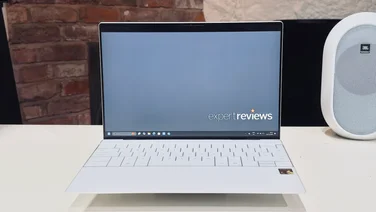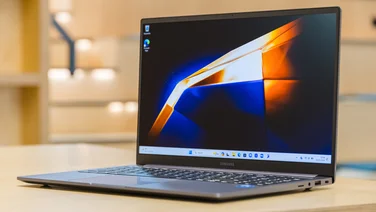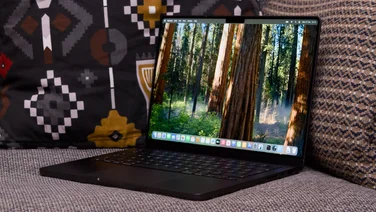To help us provide you with free impartial advice, we may earn a commission if you buy through links on our site. Learn more



We were impressed with Samsung’s Q330 laptop when we first saw it last year; the 2kg ultra-portable had a great design and excellent battery life, but it wasn’t completely flawless. With only 3GB of memory and a 32-bit operating system, it wasn’t as future-proof as other similarly priced laptops. Samsung has addressed some of these issues with the latest model.

Externally, there is very little to separate the new Q330 from its predecessor. The black lid now has a carbon-fibre effect finish, but thankfully the excellent keyboard remains unchanged. Typing on the full-size Chiclet-style keys was comfortable and precise. The touchpad is still on the small side, which forced us to increase the cursor speed in Windows so we could span the desktop in one motion.
To avoid redesigning the motherboard layout for the existing chassis, Samsung has opted to stay with an original Core i3 processor rather than use a newer Second Generation Sandy Bridge chip. The dual-core i3-380M runs at 2.53GHz, which should be powerful enough for most tasks, but it can’t increase its clock speed through Turbo Boost for increased performance like a Core i5. The chip does show its age in our new multimedia benchmarks, with an overall score of 46, but during everyday use it still felt responsive when running several programs simultaneously.
The operating system has been updated to the 64-bit version of Windows 7 Professional, finally adding support for memory configurations of 4GB or greater. Oddly, though, Samsung has decided not to upgrade the memory from its original specification, leaving it unchanged at 3GB. If you want more memory, you’ll need to perform the upgrade yourself – you’ll just need to remove a panel on the bottom of the laptop.
Even in this new guise the Q330 still lacks a dedicated graphics card. The integrated graphics do help battery life; in our light usage test, the Q330 lasted just shy of seven hours, but playing modern games is out of the question – the laptop struggled through our Call of Duty test at 10.9fps. Thankfully, Intel’s integrated graphics chip is much better at handling video, playing 720p content smoothly on the 13.3in display.

Both moving video and still images looked very sharp at the screen’s 1,366×768 native resolution. The screen is bright, but colours aren’t particularly accurate; some images had a slight blue tint, which required a trip to the graphics control panel to fix. There isn’t a great deal of screen tilt, but both horizontal and vertical viewing angles are good enough that several people can view the display at once – the glossy finish made it difficult to see the screen clearly under harsh office lighting, though.

Due to its last-generation processor, the Q330 may not be at the forefront of performance, but it’s still a fantastic ultra-portable. Thinner laptops are available, but very few have optical drives. We’re still a little baffled as to why Samsung insists on installing 3GB of memory and we would have preferred dedicated graphics, but for this price there are few better options.






